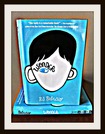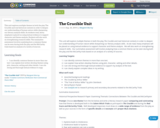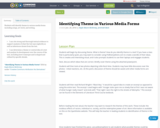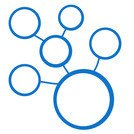
This is a 7th grade ELA lesson plan which could be used at the end of a novel study of RJ Palacio's Wonder.
- Subject:
- English Language Arts
- Material Type:
- Lesson
- Author:
- Rachael Branyon
- Date Added:
- 07/30/2024

This is a 7th grade ELA lesson plan which could be used at the end of a novel study of RJ Palacio's Wonder.

This unit explores multiple themes in both the play The Crucible and real historical contexts in order to deepen our understanding of human nature while sharpening our literary analysis skills. As students read, heavy emphasis is placed on using textual evidence to support character and theme analysis. Students will also work on strengthening research skills. The summative assessment involves analyzing how a common theme can be seen during both the play and the McCarthy trials based on analysis of a variety of sources.

Students will identify theme in various media forms including songs, art-work, and writing.

Students often struggle to find theme in literature--one that is not a bumper sticker, a "moral to the story," or anything that could be applied to more than one story. Understanding what theme is, an implicit argument the author is making, is the first step. Then it gets more complicated as they realize that there are wrong answers (the ones that don't make sense with the story), there are undeveloped answers (ones that don't get far enough past motif but are on the right track), and there are many possible correct answers that can be explained and supported with the text. This activity uses the Generate-Sort-Connect-Elaborate strategy in small groups to help students focus on the details of the story and how they contribute to the overall point of the story. It can be used with any piece of literature you deem appropriate for your students.

Students often struggle to find theme in literature--one that is not a bumper sticker, a "moral to the story," or anything that could be applied to more than one story. Understanding what theme is, an implicit argument the author is making, is the first step. Then it gets more complicated as they realize that there are wrong answers (the ones that don't make sense with the story), there are undeveloped answers (ones that don't get far enough past motif but are on the right track), and there are many possible correct answers that can be explained and supported with the text. This activity uses the Generate-Sort-Connect-Elaborate strategy in small groups to help students focus on the details of the story and how they contribute to the overall point of the story. It can be used with any piece of literature you deem appropriate for your students.

Students often struggle to find theme in literature--one that is not a bumper sticker, a "moral to the story," or anything that could be applied to more than one story. Understanding what theme is, an implicit argument the author is making, is the first step. Then it gets more complicated as they realize that there are wrong answers (the ones that don't make sense with the story), there are undeveloped answers (ones that don't get far enough past motif but are on the right track), and there are many possible correct answers that can be explained and supported with the text. This activity uses the Generate-Sort-Connect-Elaborate strategy in small groups to help students focus on the details of the story and how they contribute to the overall point of the story. It can be used with any piece of literature you deem appropriate for your students.